The previous post was a review of the FD3 Triathlon Series as if it was a product. Below you will find a more detailed account of my personal experiences during the race. Let me know in the...
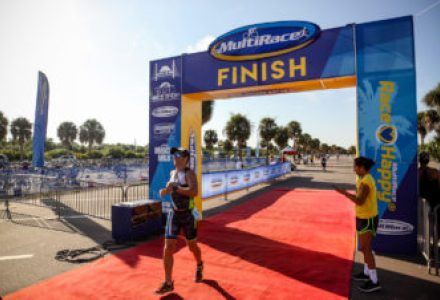

The previous post was a review of the FD3 Triathlon Series as if it was a product. Below you will find a more detailed account of my personal experiences during the race. Let me know in the...

FD3 FLORIDA TRIATHLON INTRODUCTION The event company Multirace, holds numerous running and Florida triathlon events, and recently has planned an event in Habana, Cuba. The Multirace...
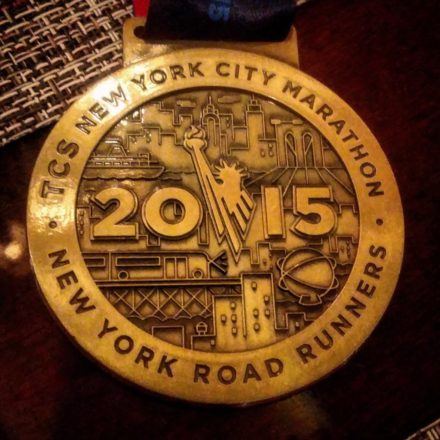
If you didn’t have an opportunity to read the epic writing in the previous post, I discussed the reason “why” I ran the NYC Marathon, then I highly recommend that you do. Not just because the...

My Why - PKD The human brain is an advanced computer that controls many different systems. The body is like a room full of servers each independently managing a different system with one major...
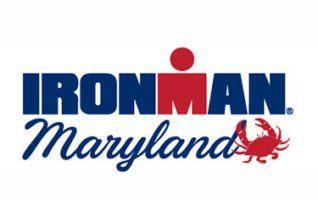
IRONMAN Maryland Part 1 I signed up for Ironman Maryland initially due to the reviews that said it was fast, and beautiful. Jaime started it with all the hype about it being a fast flat bike course...
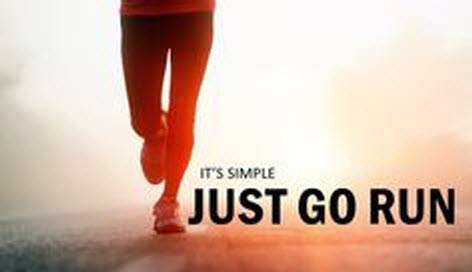
Happy Hump Day! Workout Wednesday’s will consist of favorite workout of mine that I either have prescribed to my clients or have been assigned by MY Coach. It might also be a favorite of yours. ...

Here it is again, a long time since my last post. Life happens and when it does, watch out. It can really mess up the things you want to do versus the things you must do. I am learning to prioritize what is absolutely important to me versus what is important to everyone else. I hope to soon have that under control, but I digress.
Newton was nice enough to send me both a pair of the Newton Energy and the BOCO. I am reviewing them together since I have found they are the same shoe with the only difference being the BOCO has a tread that is made for the trails and the Energy is made for the road.
To be transparent and honest, I am a certified Newton Coach, so I am a little biased towards Newton. However, I rarely train in Newtons, as running is very personal I have my favorite running shoes to train in.
I do however, love the methodology behind them. For those that do not know, Newton running shoes have 5 lugs in the front of the shoe directly under the ball of the foot. The lugs have a higher or lower profile depending on the shoe.
The lugs serve as a reminder for running form by automatically driving the foot to land on the fore or mid foot, reducing the impact dramatically.
When paired with Newton Natural Run training, the shoe will decrease the effort level of transitioning to a mid or forefoot runner.
In my experience, after the runner has developed the habit, they no longer need to be running in Newtons, but most do not only due to muscle memory, but they also last about 4 times longer than other running shoes.
Prior to the release of the Energy, the core products Newton produced were the Motion, the Isaac, the Gravity and the Distance. These models needed a transition period for the runner to get used to the way the lugs lifted the heel causing some calf soreness.
The Energy now has a lower profile of lug, and a transition plate which actually allows the athlete very tiny transition period, if any, before the comfort of the shoe settles in.
The EVA foam that makes up the sole of the shoe is extremely comfortable and highly accommodating to the road.
The only conflicts I have heard is the heel cup is a little shallow for some, causing some slippage during long runs.
Since one of the core beliefs of natural runners is that shoes should be tied just tight enough to secure the heel, this could be a problem. I have always taught, the athlete needs nothing to support but themselves.
In other words, if the shoe is tied too tight, the shoe ends up supporting the runner. By tying the shoes very light and only tight enough to secure the heel, the feet, the calves, the ankles are strengthened with every activity.
I personally have not found an issue with the heel cup even without the help of a runner’s lace, but I have heard of the issues.
I did get an eleven-mile run on the trails with the Newton BOCO and was I surprised at how well the tread grabbed the terrain. 
The trails I was running were meant for Mountain Bikes and that meant steep climbs and steep downhills and there was not a moment I did not feel secure.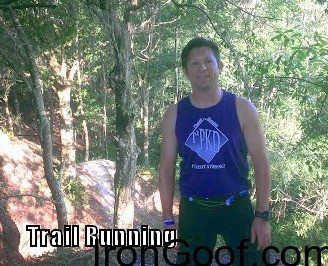
For new runners or for athletes transitioning to more efficient technique, I believe the Energy is the perfect shoe. They are the perfect shoe to transition with before trying one of the core Newton models.
The BOCO is a great trail shoe for anyone wishing to start or continuing a journey into trail running. They are comfortable, supportive and made me feel completely secure on the trails.
That’s my opinion and I am sticking with it. Happy Running!
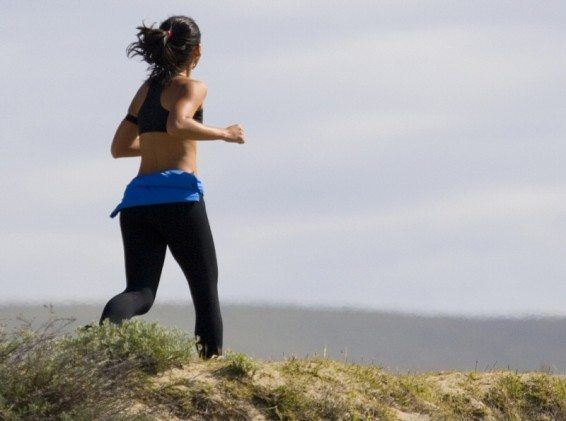
I can hear it now….”Know wonder they call you a Goof…you are crazy.”, “So, if I run slower I will get faster? You are out of your mind.” It was not to long ago I used to think the same thing, but as with everything I post, there are reasons and science to back it up.
Let’s face it, logic would dictate that pushing the pace of your easy days, as close to race pace as possible, would help you get fit faster and help you speed up, right? A lot of coaches, including myself, will tell you to run slow on your easy days, and easy days should be making up anywhere from 50-75% of your weekly mileage.
I have clients continuously asking me, “why are my easy days so slow?” The latest is my famous sit downs with my runners telling them to slow down after examining their data and finding them running tempo speeds during an easy day.
The answer to the question is what Arthur Lydiard and most other coaches would call the aerobic system. The aerobic system, or aerobic development, is the one of the most important fundamentals into unlocking your true potential.
Let us first check the stats on the energy contribution the aerobic system provides for races. As you can in the chart below, even the shorter events like the mile, over 80% of the energy required to run the race is produced via the aerobic system.
Aerobic training is the scientific fact that to move your body at higher intensities, the body needs to break down sugar and convert it to glycogen so it can be used as energy.
The aerobic system plus oxygen starts a chemical reaction known as Aerobic Glycolysis which continuously powers continuous endurance activities. In the aerobic system energy ATP is produced through Pyruvic Acid and Lipid/Protein fragments entering the Kreb Cycle and the Electron Transport Cycle.
Uh…what?
During aerobic respiration (yeah, that’s breathing) the body uses all the oxygen it needs to power the muscles. When you are running in your “aerobic zones” (easy runs), your muscles have enough oxygen to produce all the energy they need to perform.
See? Improving your capacity to transport and efficiently use all the available oxygen to produce energy will enable you to race faster since this makes up 85-99% of the energy needed to race.
Since running easy is aerobic development, what better way is there to train the aerobic system? There is none.
Capillary development – capillaries are the smallest of the body’s blood vessels and they help deliver oxygen and nutrients to the muscle tissues while exporting waste products out. The larger the number of capillaries you have surrounding each muscle fiber, the faster you can transport oxygen and carbohydrates to your muscles.
Aerobic training (easy running) increases the number of capillaries per muscle fiber, thus improving how efficiently you can deliver oxygen and fuel to your working muscles and how quickly they can clear waste products.
Myoglobin is a protein in the muscles that binds the oxygen that enters the muscle fiber. When oxygen becomes limited during intense exercise, myoglobin releases oxygen to the mitochondria to produce more energy.
The more myoglobin you have in the fibers of your muscles, the more oxygen is transported under aerobic stress. Like, uh, during a race. Aerobic training increases the amount of myoglobin you have in your muscle fibers.
Mitochondria are microscopic organelle found in your muscles cells that contribute to the production of ATP (energy). In the presence of oxygen, mitochondria breakdown carbohydrate, fat, and protein into usable energy.
Therefore, the more mitochondria you have, and the greater their density, the more energy you can generate during exercise, which will enable you to run faster and longer.
Aerobic training increases both the number and the size of the mitochondria in your muscle fibers.
Suffice it to say that aerobic development is the single most important factor to long-term development.
Of course, track workouts, VO2 max sessions, tempo runs and cross training will increase your fitness and are still incredibly important to racing faster. However, nothing will help improve continuously like developing the aerobic system.
Aerobic development is dependent upon running in your aerobic zones (for my runners Zones 1-3). This is why running faster on your easy days develop the aerobic system. Once you step out of those aerobic zones, on easy runs you diminish development of your aerobic system, but you also increase the chance for injury. Nope, two negatives do not make a positive in running.
This is one of the single biggest mistakes runners of all experiences make in their training.
As a coach and trainer I have always distinguished myself because I am always able to give my clients and readers the “why”. (Sometimes my clients end up telling me to just shut my mouth. when I am training with them because I am continuously telling them why they are doing each movement of an exercise or workout. I guess it may not be an advantage all the time. Go figure.)
Scientific research has been able to identify how the aerobic system adapts and responds to certain training paces. Physiologically we know:
It is pretty clear now right? Your optimal easy run pace for aerobic development is between 55 and 75 percent of your 5k pace, with the average pace being about 65 percent.
It’s also evident that running faster than 75% of your 5k pace on your long run has very little additional physiological benefit.
In fact, the research indicates that it would be just as advantageous to run slower as it would be to run faster. Running around half of your 5k pace is pretty easy right? Wouldn’t you know it, the evidence is clear that it still provides near optimal aerobic development.
Feel free to let me hear your feedback. I welcome any other case studies, personal experiences and other research as I am always learning. I provide you with the best content I can, but I have an open-mind and know that there may be other research out there that may negate information I post.
~IronGoof

All facets of training whether you are a runner, triathlete, tennis player, crossfitter, or weekend warrior have a dependency on diet. As medical technology continues to increase the ability to test for different components of our blood, tissue and muscles the evolution of new diet trends will continue.
As an endurance athlete I have depended on Nutrition timing during training and long events, but recently I have been doing some experimenting. The question I have: when does timing of nutrition make sense and how so.
I recently went out for a 12 mile run with a friend and did so with only my daily regimen of vitamins and such. Usually, I would be packed with gels, electrolytes and water, but this time I was armed with only the water fountains on the course. I was shocked when we finished 12.5 miles and I felt fine. I continued to be mindful when I realized that even afterward I didn’t feel the effects of this long run like I usually would.
It is true, that I continue to benefit from my Ironman training from last year, as I continue to maintain at least my long runs. However, I usually would always prepare for runs over 6 miles with, what I thought was the appropriate nutrition. I am now questioning that especially after doing some more research.
Nutrient timing simply means eating specific nutrients (such as protein or carbs)… in specific amounts… at specific times (such as before, during, or after exercise).
In the early 2000s, with the publication of Nutrient Timing: The Future of Sports Nutrition by Drs. John Ivy and Robert Portman, the trend of all following publications became Nutrition Timing.
Since then, there have been discoveries that some of those early studies had design flaws or weaknesses.
Interestingly, as more long-term data appeared, nutrient timing started to seem like less of a universal solution. Sure, there were still strong indications that it could be useful and important in certain scenarios.
Unfortunately very few people talk about the flip side: Further research, using similar protocols, failed to find the same effect. See what I mean about new technology dictating new results?
For example, most of us have heard the Holy Grail of nutrient timing research has been something we call the post-workout “anabolic window of opportunity.”
The basic idea is that after exercise, especially within the first 30-45 minutes or so, our bodies are greedy for nutrients.
In theory, movement — especially intense movement, such as weight training or sprint intervals — turns our bodies into nutrient-processing powerhouses.
During this time our muscles suck in glucose hungrily, either oxidizing it as fuel or more readily storing it as glycogen (instead of fat). And post-workout protein consumption cranks up protein synthesis.
In fact, one study even showed that waiting longer than 45 minutes after exercise for a meal would significantly diminish the benefits of training.
With these physiological details in people’s minds, it became gospel that we should consume a fast-digesting protein and carbohydrate drink the minute our training ended.
Or, even better, immediately before training.
The only problem: research supporting this idea was short-term.
And just because we see positive effects in the short-term (like, in the next half-hour) doesn’t mean these effects will contribute to long-term results (like, in 3 months).
In fact, recent longer-term studies, as well as two incredibly thorough reviews, indicate that the “anabolic window of opportunity” is actually a whole lot bigger than we used to believe.
It’s no longer like the 1 inch cellphone screen that you practically have to squint to see. It’s a huge, smartphone like LCD screen.
This is just one of the areas that have been re-researched with new technology. To keep this post as short as possible below are some other aspects of nutrition timing I have found.
–IronGoof

It has been a while, and I have a ton of ideas that I am anxiously awaiting to share with you. Unfortunately, time has been getting away from me. Between training myself, a full-time job and being at capacity with 15 individual clients I am struggling for time to post. I promise I will figure out a way to make time. I am so lucky to have such great people to bounce ideas off of, that sometimes, by not posting, I feel like I am letting all of you down, so I promise to post more even if the posts end up being a lot shorter than usual. (Which the length is probably not your favorite part of it anyway. I know I ramble.)
Before I get into the nitty-gritty of my personal opinion of compression, a disclaimer.
I am not a medical professional. The opinions that are shared on this post come from research, my own experiences and the experiences of athletes I have personally witnessed and information I have researched. Every athlete/person has a different body and some products and/or methodologies may be advantageous for some and may even be dangerous for others. This post deals with my beliefs and my research. (Was that clear?)
Lately, most of the questions from other athletes, including clients of mine, have asked about compression. This usually centers around calf sleeves, but does include some of the other compression apparel as well. My answer is usually, for recovery and for temporary use they are great, but not for training. Why? Great question.
I am going to use calf sleeves as my example.

While running, biking, swimming or any major activity using the legs, the muscles are constantly in motion. That motion is what naturally makes the muscles stronger. The muscle moves and is loaded with either more repetitions, or with weight. The full range of motion of each muscle is imperative to the strengthening of the muscle. Compression holds that muscle in place and limits the movement therefore limiting the range of motion. While compressed the muscle cannot fully develop while training. Let’s take a look at the anatomy of the lower leg in the running position.


As you can see the gastrocnemius muscle and Achilles tendon, when the knee is flexed, both constrict and then elongate when the knee straightens. Here is the epitome of the range of motion naturally occurring when running. The more flexion and constriction that take place the more they are stretched causing the breakdown of the fibers. After the recovery period the fibers wrap tighter and in more abundance aiding in a strength and endurance. Now imagine that gastrocnemius muscle remaining constricted due to a calf sleeve. It seems to me that this would dictate that it would not have full range of motion also causing the Achilles tendon to remain stretched without the full ability to absorb the impact. This could unintentionally damage the Achilles tendon, the gastronemius muscle and the soleus muscle. If not damage, it will limit the ability to be strengthened. This is why I personally do not recommend calf sleeves during training workouts.
Recovery
I do however do not mind wearing compression while in recovery to include immediately following the cool down of a workout. I mentioned the healing of the fibers earlier. In order for the fibers to heal and become stronger after the breakdown, blood must be pumped through the muscle and with it water for hydration. Compression does help to isolate that area helping to keep the majority of the blood and water being pumped through the body to the point of the compression. With the legs either elevated or even walking around and at that point limiting the movement, it would allow for the blood to pool in that area helping to re-hydrate the muscle thereby helping to heal faster. In turn, an occasional training run or race, with compression at the tail end of an injury, might also benefit, but in a very limited quantity, and duration.
–IronGoof

It’s that time again. The beginning of the new year and time to set some new goals. Notice I am stating resolutions, these are goals. In my experience, the best way to set new goals is to make sure that each one of them is SMART.

Coach Brad with the Iron Goofy
S- Simple
M- Measurable
A – Achievable
R – Realistic
T – Timely
Let’s take a look at the last year 2013-
1. Get over my fear of leaving my day job and get my business off the ground. – Business is good, I have had up to 13 clients with 9 still with me after the tri season was over. I have 3 that have contacted me wanting to start in March. With a full-time job, it keeps me busy. Luckily a few of these are virtual so most of the work is email, phone and Training Peaks.
2. Reduce debt by minimally 50% – Complete – Actually more like 75%
3. Re-commit to a financial plan and budget – Complete – see #2
3. Complete my Certified Personal Trainer, USAT Level 1 coach, and USATF Level 1 and minimally begin my Certified Nutrition Professional. – Complete except for CNP (*also added RRCA, Newton & Lydiard Certs)
4. Blog at least 5 times a week – Unfortunately, this did not happen more like once, but will re-commit for this year to at least 3.
1. 2 Ironman Triathlons: IM Louisville, IM Florida – IM Florida, but IM Louisville turned out to be more financial 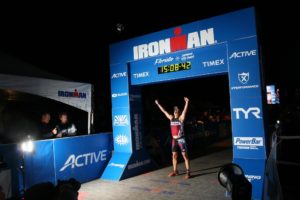 then not trained.
then not trained.
2. IM FL in less than 12 hours – This one was discouraging. Read about it. – I am thinking about doing another one for vindication.
3. Running average pace at 7:30 min/mile at RPE 2 – I got to about 7:45 for a 10k
4. Biking average pace at 22 mph at RPE 2 – Complete – hit this at IM Augusta
5. Swim at 1:45 per 100m at RPE 3 – Incomplete – will have to focus more on the swim this year
6. Start CrossFit as strength training – Started it, but stuck to more of a Lydiard method. Will be incorporating at least once a week during strength phases.
7. 1 half-marathon at 1:35 or less – 1:43 was still my best. Have to dedicate to this one again
The score is 8 out of 13 completed with each at least attempted. I would consider it a successful year, but I would like to do better.
1. Completely eradicate debt
2. Start another passive income stream with the possibility for full-time income. (already started actually)
3. Have a plan by the end of the year for leaving my full-time job
4. Communicate more with family
5. Start a financial plan for the future
6. Understand more about SEO and Internet Marketing
7. Blog 3x per week minimally
8. Complete CNP, USAT Youth & Juniors, USAT Official and start CSCP certifications
9. Less take-out and dining out, more cooking. (25 out of 30 days a month)
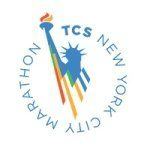
1. New York Marathon – 3:40 or better
2. Half Marathon – 1:35 or better
3. Conversational pace at 7:30
4. Complete 2014 miles ran
5. Possible Vineman Ironman Distance?? (Vindication Race)
6. Complete two 70.3 triathlons
7. Swim at 1:45 per 100 for 2 miles
8. Inaugural ITU Chicago Triathlon – 2:25 or better
9. All members of the TNT I am coaching crossing finish line at both Nike Women’s and RnR San Diego
10. First – Complete Dopey Challenge with a smile.
My friend Beth from Discom-BOB-ulated Running posted a great idea for a challenge that she is hosting, so I am informing you of it as well, because I like it.
January seems always to be the month that either athletes are starting their pre-season fitness, are finishing their season or in the middle of their off-season training. If you are in any of those phases motivation can be a factor, so why not wear a different race shirt every day for the month of January. C’mon….it will be fun.
I am personally not lucky enough to have a liberal dress code, but I know that I will be working out at least 20-30 times during the month of January, so I can at least wear a different one each day, plus when just strolling around the house. Most of you can probably do that too right?
Just take a pic every day and post it to a social media site of your choice. Stay motivated and get some wear out of all those race shirts.
In other news, I have been invited to be in a test group for the brand new P90X3 DVD workout system. I have completed the original P90X a couple of times when it first came out and saw some great results. The difference is that the original workouts were sometimes 90 minutes long. P90X3 are short 30 minutes of effort and consist of several types of workouts including, power, agility, speed, isometrics and more. I will be starting the challenge on January 6th, so I hope to be blogging a lot of my experience with it. What will be interesting is that I will continue to be running, biking and swimming on top of these workouts. Whew! I am getting tired just thinking about it.
You too can join the fun with your favorite Goofball (yeah, me) and order it yourself by clicking here.
One last thing don’t forget about the BEST DAMN RACE coming up in Tampa on February 1st and in Orlando on March 1st. This is, without bias, one of the most well run races I have ever been involved with. Both courses are beautiful and with beer included in your very inexpensive race fee, what is there to lose.